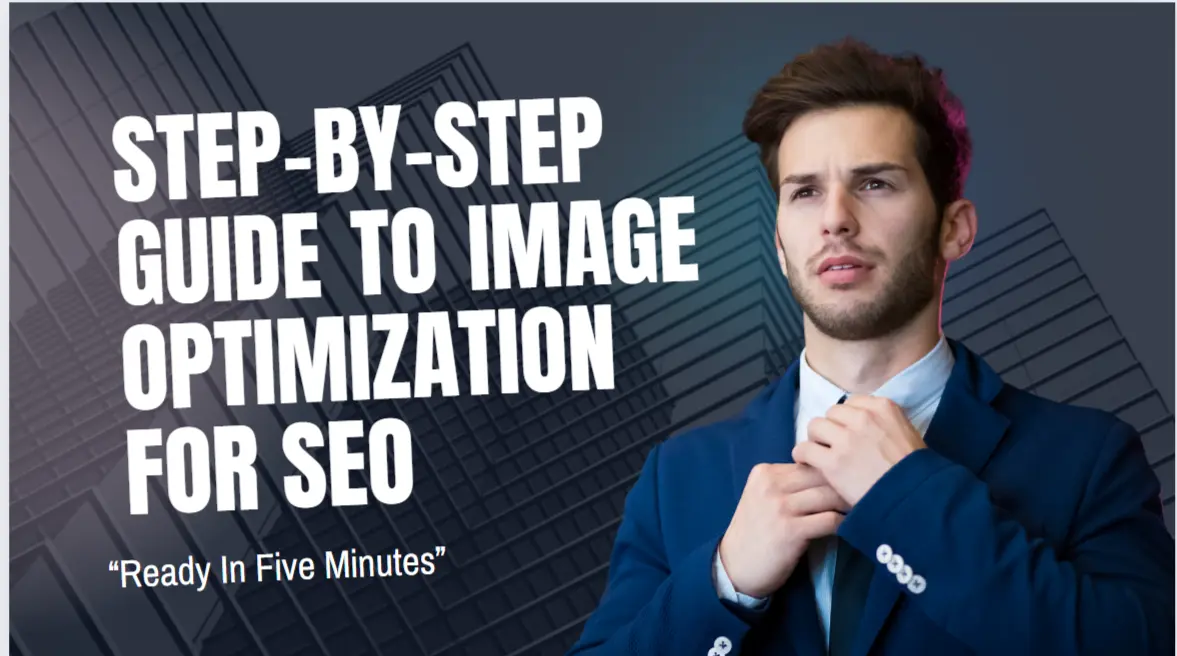Image optimization for SEO has emerged as a crucial tactic for improving website visibility in the digital age, as visual content is essential for user engagement. Optimized Images can boost search engine rankings, improve user experience, and dramatically speed up page loads. Optimize Images for SEO Webmasters may make sure their photos enhance overall SEO efforts by paying attention to elements like file size, format, and alt text.

Step-by-Step Guide to Image Optimization for SEO
Table of Contents
Always use images
Picture optimization means creating and sharing high-quality photographs in the right size, format, and resolution in order to increase user engagement. It also means correctly tagging images with information so that search engine crawlers can interpret photos and understand the context of a page.
According to HTTP Archive, images make up 21% of the weight of an average web page.
This percentage has probably increased over the past few years due to the fact that photos take up more bytes than any other component of the website. As a result, site speed is greatly impacted by image size and complexity.
Resizeable photos improve user experience and page load times without compromising quality. It might help search engine results, which would further boost customer engagement, conversions, and retention.
1. Resize your Optimize Images for SEO
File size and image size are not synonymous. The term “image size” describes an image’s measurements, such as 1024 pixels by 680 pixels.
The size (e.g., 350 kilobytes) of a file indicates its storage capability.
Larger, higher-resolution photos will cause your page to load much more slowly. Even if they work quite well in printed products, they should be scaled for the web.
Save appropriate format
All three formats—PNG, JPEG, and GIF—have advantages. For photographs with a lot of color, I suggest JPEG; for simpler images, PNG.
2. Optimize image file names
Use descriptive, pertinent keywords when naming the file to optimize its SEO potential. Start with the target keywords and split them with hyphens.
Search engines won’t be able to “see” individual words if underscores are used because they are not recognized by them.
Both search engines and people should be able to understand the file names. For instance, rename an image of a woman in a hair salon with a clearer, more descriptive title, such woman-having-a-haircut-in-a-salon.jpg, if the original filename was salon234.jpg.
3. Use alt tags Optimize Images
The image may make sense to viewers, but search engine spiders require clarification.
If you do not provide alternative text, search engines will not be able to properly index your image content.
By offering context, an alt tag can help users who are visually impaired. The alternative language that search engines can utilize to rank the page in the event that an image loading error occurs is also helpful.
Provide more information in the alt tag than in the file name. To communicate something about the visual, try to use 10 to 15.
4. Make images mobile friendly Optimize Images
Because of Google’s mobile-first indexing strategy, crawlers primarily view a website’s mobile version.
Thus, you should also make your photographs mobile-friendly.
How?In summary, ensure sure the images and style of your website adjust to the screen size.
You can change the image size to fit the width of the device, even if certain layouts and website builders automatically resize photos.
To find out more about making your photos responsive, take a look at this short tutorial.
5. Optimize the image title Images
Typically, WordPress uses the file name as the image title. If you are not using WordPress, or if the title is not a good enough description of the image, update it with the relevant keywords, exactly like file names.
Though being less important for SEO, image names can boost the alt text in relevance.
Consider including a brief call to action in the title of your images, such as “buy now” or “download today,” to boost user engagement.
6. Use unique images Optimize Images
Using stock photos is OK, but it won’t necessarily boost your search engine rankings because other websites most likely use the same images. Stock photo Uploading unique photos is a good idea, just as unique textual content is better for search engine optimization.
7. Ensure text complements the Optimize images
You can include more context for an image in the description section of your page if the image’s content isn’t sufficiently explained there to help search engines determine the image’s relevancy.
Conclusion
The whole of these components is image SEO. As Google continues to improve its ability to identify parts in photos, it only makes sense to ensure that the image and its components support both SEO and a positive user experience. It would be absurd to try to trick Google.
Questions:
What are the Benefits of Image Optimization for SEO?
By optimizing your photographs, you can speed up the loading of your page.
You may improve your website’s photos to make it show up better in search results.
Smaller images will use less bandwidth.
Smaller-sized images take up less space on your server.
How Can I Optimize Images for Better SEO Performance?
Help us locate and index your pictures. Use HTML image elements to embed images. Use a sitemap with images. Visually adaptive, Utilize graphics to enhance the landing pages. Check your page’s title and description. Add well-structured data. Make use of descriptive filenames, titles, and alt text.Eliminate inline, anchor from Google Images, and make SafeSearch-aware changes.
What Tools Can I Use for Image Optimization SEO?
Alt text, Image optimization, Image sitemap, Image sizing and compression, Resize your images, Responsive images, Add image structured data, Captions